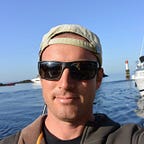Exploring Reefs Leads to Curiosity
We left when school started with a busload of boisterous students, all boys who have been working for the past few weeks as part of the LEAP Academy. I listened in passively to a conversation on Minecraft, discussing strategies for a game that years later has not lost its appeal.
We were going to Padangbai, the closest place we could find good quality snorkeling from our school. The students had been working for the past few weeks on a plan to build a bio-reef, and in the process were slowly developing a deeper understanding of the marine environment. They had created flashcards of bioindicator species, and carried out many conversations with different NGO’s across Bali about what makes a healthy reef, and how can we help our reefs in this day and age. Our goal for the day was to visit a couple nice snorkeling spots, test our knowledge of the undersea species, and see the students in action when it came to free diving.
After haggling for the boat, we got out to sea and were on our way around the point. Our first site was Teluk Jepun, where marine tourism is found in a variety of forms. Some people were diving, and there was even a submarine that does a short foray to explore some of the deeper reefs while staying dry. We got into the water and immediately headed for the shallows, where we could snorkel in 1–3 meters of water and see an abundance of wildlife. Minutes after dropping off the edge of the boat, the kids were popping up asking if they were correctly identifying various animals, and excited that their abstract knowledge was finding firm ground to get rooted in.
We were lucky enough to stumble upon an eel who had decided to move hiding spots. He did not seem overly concerned with our presence, and we took turns snorkeling down next to him and getting a close encounter with a fellow who often goes hidden.
After a bit of play in the shallows, we headed into deeper water to find some examples of structures that were growing artificial reefs. I wanted them to see what people had created, and see if it was indeed attracting wildlife and providing substrate for coral to grow on. The kids immediately noticed a dramatic drop in temperature in the water. Hey, this was the right moment to introduce the concept of a thermocline, and share how the ocean currents work and create these stratified layers of water at different temperatures. Some noticed the shimmering, and equated it to mirages of the desert. Indeed, there was a link, as both are due to large shifts in temperature of the medium light passes through.
The free divers also experienced their first deeper dives, and now had a reference point to relate to when it came to how they could improve their free diving. We were going no deeper than 8–10 meters, but the feeling of being compressed, of being chilly, and of having a long way before we could take our next breath was an important step in understanding just what we were to achieve in the coming weeks.
After boarding our boat, we headed to Blue Lagoon, a site more popular and more crowded with tourists. However, not many were snorkeling in the waters. When we got in it was obvious why. Here, the cool oceans had filled the bay, and the water was quite chilly. Jumping in the haze the students saw at depth on the previous site was just below the surface.
In continuing our sea safari we saw more of the same, until a couple students started shouts through their snorkel. A day octopus had come out of hiding and was skirting along the reef. We were lucky enough to spot her and got a chance to stay with him for until we got bored. We saw her respond to our proximity, and change as she passed along the reef. We were lucky enough to film this amazing phenomenon.
Back in the boat the banter had changed tack. Now, Minecraft strategy was no longer spoken of. Instead, stories of the interactions with sea creatures and further questions sprung from the kids. The experience had piqued their curiosity, and they had a reason to search out deeper understanding on the oceans.
Getting back to school we furthered our knowledge by watching videos of the currents, and using our computers as the knowledge banks they were. By the end of school, Minecraft had crept back into the dialogue I was listening to, but I felt happy that this group of students had a chance to connect just a little bit deeper with the oceans that surround our island home.
